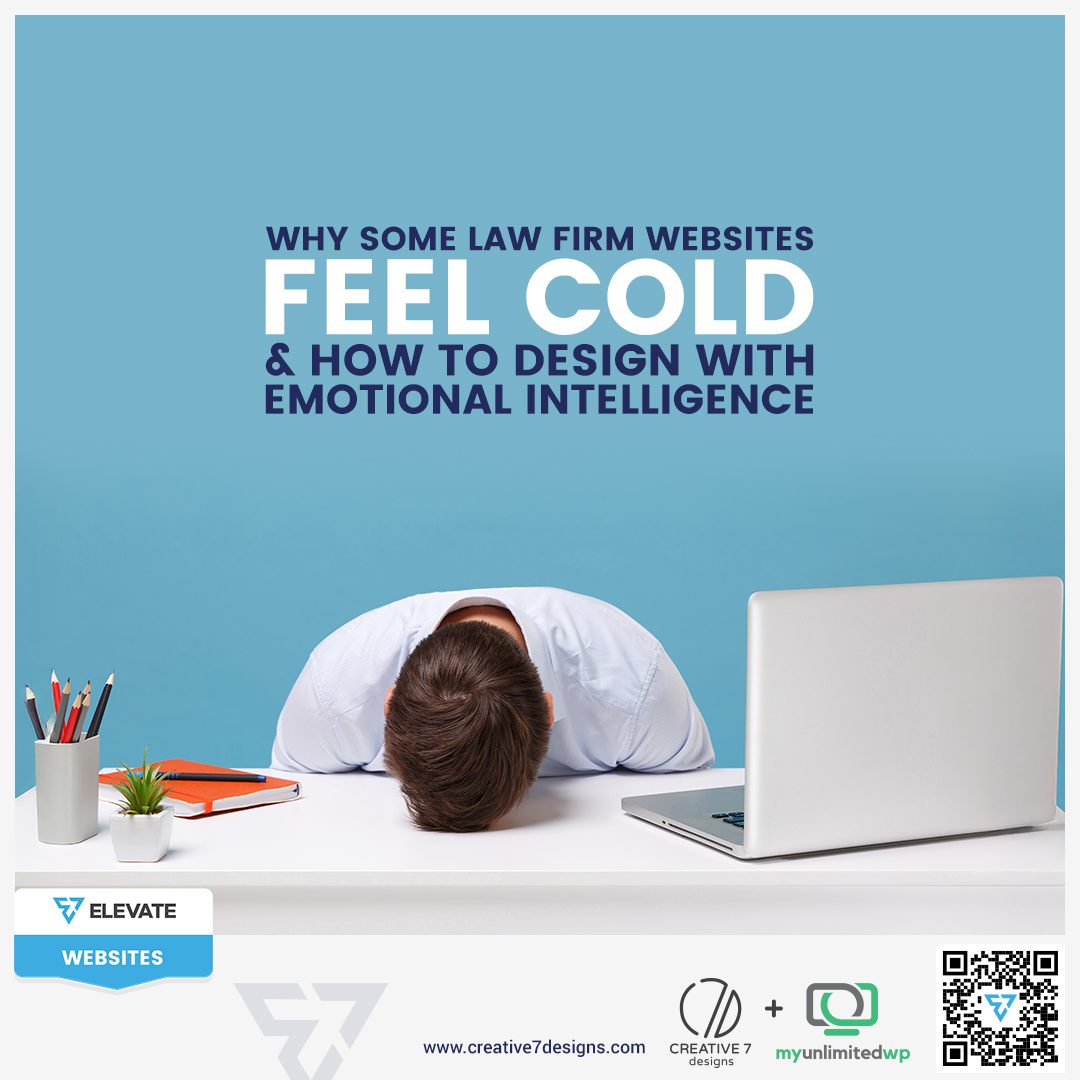Overview: Cold legal websites push clients away. Learn how to use emotional intelligence in law firm web design to build trust, warmth, and stronger client connections. Read on!
When someone visits a law firm’s website, they’re often navigating a deeply personal or stressful situation — whether it’s a divorce, a business dispute, or a criminal charge. Yet, too many law firm websites feel sterile, transactional, or even intimidating. This emotional disconnect can lead to lost trust, low engagement, and missed opportunities to convert visitors into clients.
Let’s explore why law firm websites sometimes feel cold — and how you can redesign them using emotional intelligence to foster connection, trust, and action.
The Problem: Emotionally Disconnected Legal Websites
Many law firm websites unintentionally push potential clients away because they:
-
Overuse legal jargon and complex language
-
Prioritize credentials over connection
-
Feature stock photos that feel generic or impersonal
-
Lack a clear voice or story
-
Focus solely on services — not the people they serve
These elements might check the “professional” box, but they miss the human element. For clients dealing with legal stress, a website that feels cold can make the firm seem distant, unapproachable, or indifferent.
What Is Emotional Intelligence in Web Design?
Emotional intelligence (EQ) in design is the ability to understand and reflect users’ feelings, fears, and motivations through:
-
Visual aesthetics
-
Tone of voice
-
Messaging and storytelling
-
UX design and micro-interactions
When a site reflects empathy, compassion, and clarity, visitors feel seen—not sold to.
>> Related Reading: Designing for the User: The Importance of Emotional Intelligence in Web Design
How to Design a Warmer, More Trustworthy Law Firm Website
Lead with a Human-Centered Narrative : Tell your story. Share your firm’s mission, why you practice law, and how you advocate for clients. Use real photos, case studies, or even client testimonials that highlight your values.
Simplify Language Without Losing Authority : Avoid heavy legal jargon. Use clear, plain language that informs rather than overwhelms. Speak directly to your client’s concerns: “Here’s how we help,” instead of “Here is our litigation philosophy.”
Use Design to Create Comfort :
-
Choose calm, welcoming color palettes
-
Incorporate real team photos over stock images
-
Use clean layouts with plenty of white space for ease of reading
Elevate Calls to Action with Empathy : Replace “Submit Form” with “Let’s Talk” or “We’re Ready to Help.” Use reassuring sub-copy like “Free consultation, no obligation.”
5. Highlight the Client Journey : Map out the legal process visually or with content, showing step-by-step what clients can expect. Anticipating their questions demonstrates emotional awareness and builds trust.
6. Make Accessibility Part of Empathy : Ensure your site is accessible to all — use legible fonts, alt text, and intuitive navigation. This signals care and inclusivity, aligning with a client-first mindset.
Here’s a quick guide on >> Designing for the User: The Importance of Emotional Intelligence in Web Design that might interest you!
The Result? Stronger Connections and More Conversions
Designing with emotional intelligence doesn’t sacrifice professionalism — it enhances it. When your website reflects empathy, clarity, and trustworthiness, clients are more likely to:
-
Stay on your site longer
-
Feel safe reaching out
-
Choose your firm over a colder, less inviting competitor
A warmer website doesn’t just feel better. It performs better.
Behind every legal issue is a person seeking help. Don’t let your website be another cold barrier. Design with emotional intelligence, and you’ll stand out in a sea of sameness — not just as a capable firm, but as a trusted guide.
Reach out to Elevate: Websites and see how we can help you *elevate* your website!


